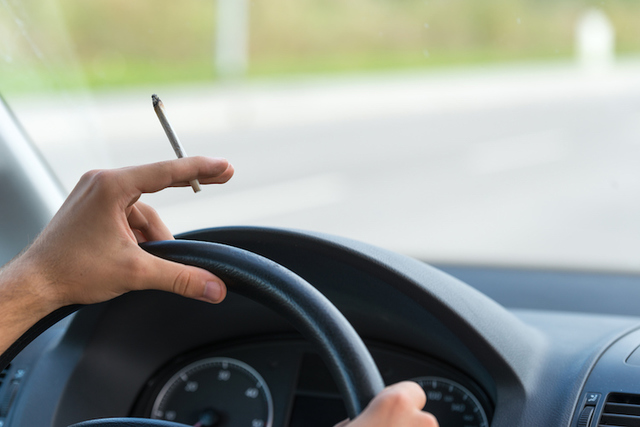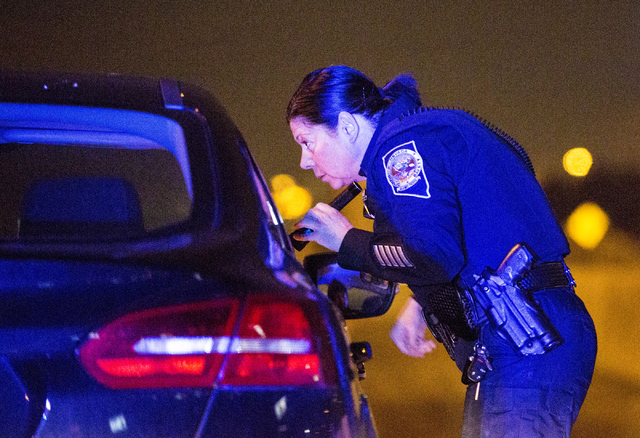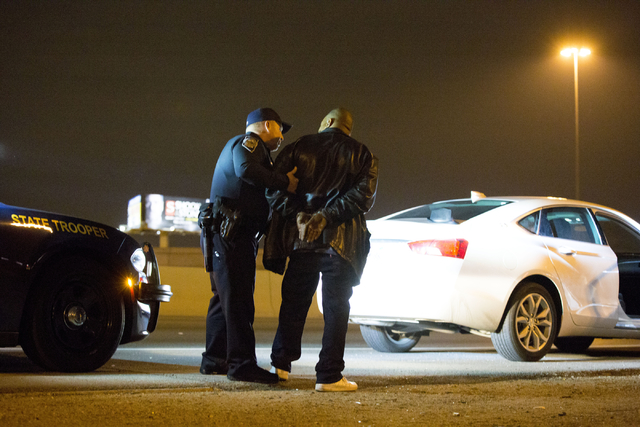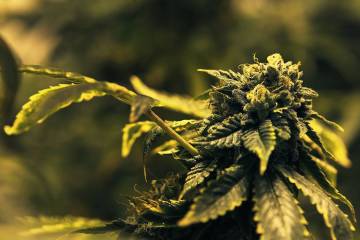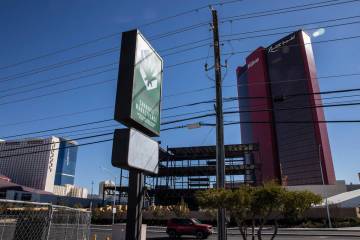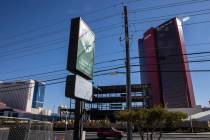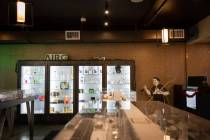Recreational marijuana may be legal now, but driving while high is not
Metro police officers are ready to crack down on drivers high on marijuana now that recreational use of the drug is legal throughout Nevada.
Although driving drunk and driving stoned are similarly dangerous crimes, the latter presents challenges for law enforcement.
Police officers in Las Vegas are accustomed to spotting drivers who are impaired. But Sgt. Jon David, who runs DUI programs for the Metropolitan Police Department, said his concern is that legalization, which officially began Sunday despite the lack of recreational dispensaries, will lead people to think that it’s OK to smoke pot and get behind the wheel.
It isn’t.
“You just can’t do it when you’re driving, just like alcohol,” he said.
Standard field sobriety tests – including the walk and turn, one-leg stand and finger-to-nose test – are effective tools for determining impairment for both alcohol and marijuana.
David said there are also other clues. People smell like booze or weed, or sometimes both. A driver high on marijuana is also likely to have bloodshot, red or watery eyes, or drooping eyelids. A May study by the AAA Traffic Safety Foundation said the drug is the second most commonly encountered substance in DUI arrests behind alcohol.
Rough numbers from Metro’s traffic unit show that of about 997 drugged driving arrests in 2016, more than half of the cases where a drug has been identified were marijuana cases.
David said some Metro traffic officers are rushing to get a 16-hour training called ARIDE — Advanced Roadside Impaired Driving Enforcement – which will teach them to discern signs associated with common drug groups and general signs of impairment.
NOT LIKE ALCOHOL
Alcohol is a fairly straightforward drug. The AAA study said there is “scientific evidence of impairment in virtually all drivers” who reach the 0.08 g/dL blood-alcohol threshold for legal intoxication.
Most responsible drivers know how to make informed choices about alcohol impairment, thanks to decades of research and public education.
It takes a little while for a drink to reach your bloodstream, and then your brain. But marijuana, when smoked, reaches your brain immediately and doesn’t clear out for a long time, David said.
And there’s little guidance telling drivers how long to wait after using marijuana before getting in the car. Regular marijuana users will run the risk of testing positive under the state’s blood-test threshold even though they may not have smoked recently. In Nevada, those limits are 10 nanograms per milliliter (ng/mL) of marijuana or 15 ng/mL of marijuana metabolite in your urine, or a blood level of 2 ng/mL of marijuana or 5 ng/mL of metabolite.
The AAA study suggested instructing marijuana users to wait four to six hours after smoking, and six to eight hours after ingesting a cannabis product, before getting behind the wheel.
The need to distinguish recent use and weed out false positives coming from regular users led some companies to try to solve that problem. Oakland, California-based company Hound Labs developed a marijuana breath test that could distinguish recent use from chronic use.
Co-founder Jenny Lynn said the device detects marijuana in the breath for two to three hours after use. Police have field-tested prototypes, which are heading into clinical trials next year.
“There’s a lot of misinformation out there and a lot of folks rightly worried about wrongful arrest,” she said. “This is the best way to detect recent use.”
Lynn said she frequently encounters young adults and teenagers who seem to think there’s nothing wrong with driving while high on marijuana. Her advice for states that recently legalized recreational pot is to begin public education campaigns right away.
“The information’s not out there, but once you start to have these conversations, people seem to understand,” she said.
Metro will continue to rely on officers’ judgment in determining impairment. But Sheriff Joe Lombardo told the Las Vegas Review-Journal in December that a committee of public safety leaders was formed to discuss new tactics for dealing with marijuana.
“It’s going to be a learning curve for us as well,” David said.
Contact Wesley Juhl at wjuhl@reviewjournal.com and 702-383-0391. Follow @WesJuhl on Twitter.
A previous version of this story incorrectly stated the length of time that the Hound Labs marijuana breath test could detect marijuana after use.
POT NEWS
Click here for complete coverage of marijuana issues in the Las Vegas Review-Journal



